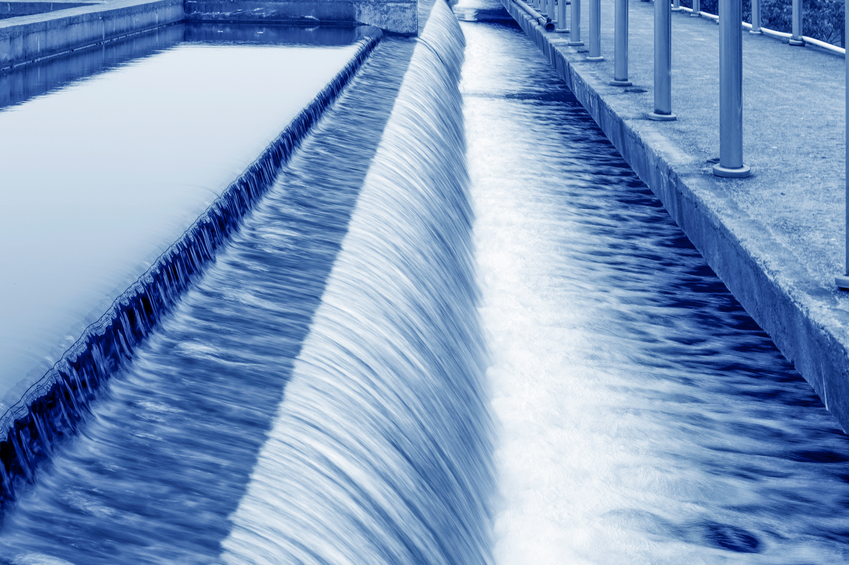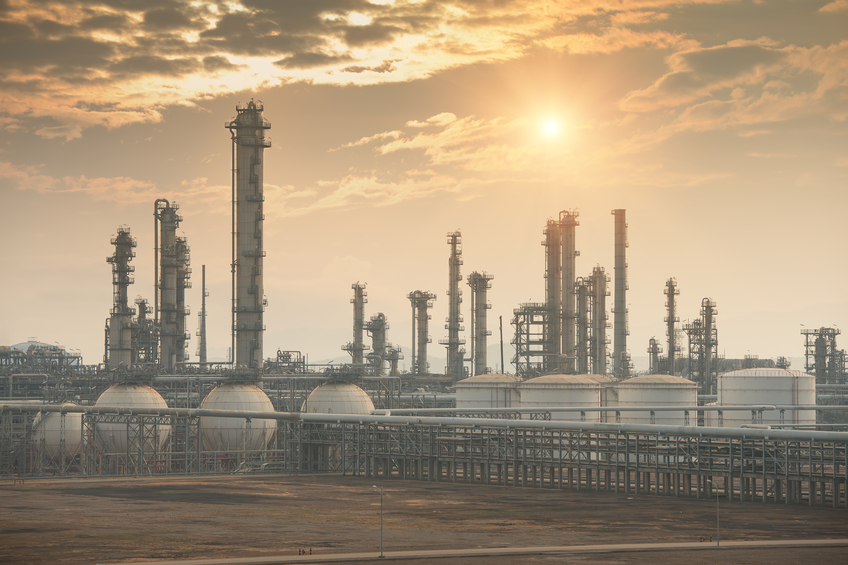HVAC System Performance 24 PDH Discount Package
Courses in this Package
Cooling Water Problems and Solutions (M05-009)
HVAC Energy Conservation through Cooling Water Treatment (M05-013)
HVAC Pump Characteristics and Energy Efficiency (M05-007)
Improving Fan System Performance (M05-004)
Overview of Steam Traps (D04-001)

This online engineering PDH course presents an overview of common chemical treatment program that may be required to maintain cooling water systems in good operating condition. Reasons and means are discussed for controlling scale, deposition, corrosion, and biological fouling. The discussion also covers the information on chemicals used for control, and methods available to permit operation within the limits.
The three primary reasons that the cooling water treatment may be required are to control corrosion, scale formation, and the growth of biological agents. Any of these problems - or more usually a combination of them - can cause a loss of efficiency, shorten equipment life and push up operating costs. Imagine the large amounts of dollars lost when insufficient cooling suddenly curtails operations of process equipment.
This 5 PDH online course is applicable to all engineers and designers involved in power plants, oil and gas, chemical and petrochemical process facilities, refineries, industrial plants and HVAC systems in commercial buildings.
This PE continuing education course is intended to provide you with the following specific knowledge and skills:
- Understand the critical parameters such as conductivity, TDS, pH, alkalinity and saturation index applicable to cooling water treatment
- Understand the factors responsible for scale and corrosion
- Understand the types of scale and methods to minimize its formation
- Understand relationship between the cycles of concentration and blowdown
- Understand the physical methods of treating water such as softener, dealkalizer, ion-exchanger, filtration, and electronic de-scaling equipments
- Understand the corrosion types and the control techniques to mitigate corrosion
- Learn four types of corrosion inhibitors including, anodic, cathodic, mixed and adsorption types
- Understand the principles of cathodic protection
- Learn the possible types of biological fouling and the treatment methods including oxidizing and non-oxidizing biocides
- Understand the chemical feed equipment for closed and open cooling water systems
- Learn the five application methods for dosing chemicals including their benefits and limitations
- Learn the control sensors and monitoring devices used in cooling water treatment
In this professional engineering CEU course, you need to review the document titled "Cooling Water Problems and Solutions".
Upon successful completion of the quiz, print your Certificate of Completion instantly. (Note: if you are paying by check or money order, you will be able to print it after we receive your payment.) For your convenience, we will also email it to you. Please note that you can log in to your account at any time to access and print your Certificate of Completion.

This online engineering PDH course provides an overview of the waterside problems specific to HVAC systems. It briefly discusses how the energy is dissipated from the open recirculation systems and how effective implementation and tight monitoring of the water treatment programs can conserve energy.
Cooling water is a vital utility for large air-conditioning systems. Use of good quality water or proper water treatment can cut your water, energy, and maintenance costs substantially. The savings are associated with the prevention or removal of scale built up on a heat exchange surfaces where even a thin film of 1/32" or 0.8mm can increase the energy consumption by nearly 10%. Perhaps most important of all, it can save you the cost of fixing or replacing equipment that's been damaged by inadequate water treatment; including the downtime and lost revenue usually associated with solving such problems.
The 5 PDH online course is applicable to mechanical engineers, HVAC designers, contractors, facility managers, O&M personnel who are responsible for operation and design of efficient HVAC systems.
This PE continuing education course is intended to provide you with the following specific knowledge and skills:
- Understanding the energy use of air-conditioning system
- Understanding the waterside problems encountering open recirculation water systems
- Understand the need for water treatment
- Understand the operating principles, application, advantages and limitations of common water treatment methods
- Understand the potential benefits of cooling water quality
- Understanding control methods - sampling, testing and recording
- Learning about safety in water treatment
In this professional engineering CEU course, you need to review the course document titled, "HVAC Energy Conservation through Cooling Water Treatment".
Upon successful completion of the quiz, print your Certificate of Completion instantly. (Note: if you are paying by check or money order, you will be able to print it after we receive your payment.) For your convenience, we will also email it to you. Please note that you can log in to your account at any time to access and print your Certificate of Completion.

This online engineering PDH course provides the students with a firm understanding of the basic principles that centrifugal pumps operate under. Topics covered include the performance curve, series operation, parallel operation, the affinity laws, friction, specific gravity & viscosity, suction lift, and NPSH.
Most HVAC systems are designed to handle the maximum potential temperature extremes, keeping the building cool on the hottest days and warm on the coldest days. As a result, the HVAC system only needs to work at full capacity on the ten or so hottest and coldest days of the year. On the other 345 days, the system could be operated at reduced capacity.
HVAC pumps are generally designed for peak conditions and the output of these systems is controlled by mechanically constricting the flow with throttling valves. This wastes energy. By using a variable speed drives, chilled water flows can be matched to actual heating and cooling demands.
This 5 PDH online course is applicable to mechanical and HVAC engineers, process engineers, architects, building designers, contractors, energy auditors, facility managers who are interested in gaining a better understanding of HVAC pump characteristics and energy efficiency.
This PE continuing education course is intended to provide you with the following specific knowledge and skills:
- Understand the basic types of pumps used in HVAC applications
- Understand the key fluid properties such as viscosity, density, temperature, specific weight, concentration and vapor pressure
- Understand why pump performance in typically rated feet of head and not pressure.
- Understand the various head terms such as suction lift, static head, discharge head, friction head, velocity head and pressure head
- Understand the laws of affinity and illustrate them with a pump operating under VFD control
- Understand the pump curve, system curve, operating point and the best efficiency point for the pump operation
- Understand the flat, smooth and drooping characteristic curve for the centrifugal pump and the applications for which it is best suited
- Understand the importance of specific speed and their relationship to the shape of impeller (radial, mixed or axial)
- Understand pump cavitation and its relationship to net positive suction head (NPSH) available and required
- Understand the various techniques for flow control including throttling, speed adjustment and multi-pump installation considerations in parallel or series arrangement
- Learn by example the method to compute the frictional head through the HVAC chilled water system
- Define the pumping system efficiency and the tips to achieve the same
In this professional engineering CEU course, you need to review the course document titled "HVAC Pump Characteristics and Energy Efficiency".
Upon successful completion of the quiz, print your Certificate of Completion instantly. (Note: if you are paying by check or money order, you will be able to print it after we receive your payment.) For your convenience, we will also email it to you. Please note that you can log in to your account at any time to access and print your Certificate of Completion.

This online engineering PDH course highlights the benefits of fan system optimization and examines fan system performance characteristics and practical issues concerning measurement data. The readers will learn to quantify the potential benefits of configuring fan systems for optimal performance, calculate the amount of energy use by your fan system, and estimate fan system efficiency. For readers unfamiliar with the basics of fans and fan systems, a brief discussion of the terms, relationships, and important system design considerations is provided.
This 5 PDH online course is applicable to students, mechanical and HVAC engineers, process engineers, architects, building designers, contractors, energy auditors, facility managers who are interested in gaining a better understanding in improving fan system performance.
This PE continuing education course is intended to provide you with the following specific knowledge and skills:
- The basics of fans systems including the important system design considerations
- The key factors involved in fan selection and system design
- The different types of fans (centrifugal and axial fan) and their applications
- The key fan system components and the opportunities for performance improvements
- The key performance improvement opportunities
- Common fan systems problems and proper maintenance requirements
- Indications of oversized fans and system leaks
- Configurations to improve fan system efficiency
- Controlling fans with variable loads
- Fan Drive Options and multiple-fan arrangements
- Fan System Economics - the cost of operating fans in your facility
In this professional engineering CEU course, you need to review the DOE Publication titled "Improving Fan System Performance" developed by the U.S. Department of Energy's Industrial Technologies Program (ITP) and the Air Movement and Control Association International, Inc. (AMCA).
Upon successful completion of the quiz, print your Certificate of Completion instantly. (Note: if you are paying by check or money order, you will be able to print it after we receive your payment.) For your convenience, we will also email it to you. Please note that you can log in to your account at any time to access and print your Certificate of Completion.

This online engineering PDH course provides an overview of this essential component and discusses the operation, selection, installation and maintenance criteria of various steam traps for different applications.
No steam system is complete without this crucial component "the Steam Trap". This is the most important link in the condensate loop and the steam system, as it connects steam usage with condensate return. By definition, a steam trap 'purges' condensate, as well as air and other incondensable gases, out of the system, allowing steam to reach its destination in as dry condition as possible to perform its task efficiently and economically. It is important that a steam trap must trap or hold back steam and not allow it to pass along with condensate or air. If not maintained or applied properly, it can result in significant energy wastage.
This 4 PDH online course is aimed at mechanical engineers, chemical engineers, process engineers, and system design engineers working in power, oil and gas, chemical, metal and mining, manufacturing and engineering industries. It is also intended for energy auditors and operation and maintenance personnel.
This PE continuing education course is intended to provide you with the following specific knowledge and skills:
- Understanding the functions of a steam trap
- Learning about the various types of steam traps; their advantages and disadvantages
- Understanding the selection criteria for the steam traps
- Knowing the system design considerations and the installation aspects
- Understanding the performance testing of steam traps
- Learning about the maintenance aspects and energy saving opportunities
- Understating the applicable codes and standards
In this professional engineering CEU course, you need to review the document titled "Overview of Steam Traps".
Upon successful completion of the quiz, print your Certificate of Completion instantly. (Note: if you are paying by check or money order, you will be able to print it after we receive your payment.) For your convenience, we will also email it to you. Please note that you can log in to your account at any time to access and print your Certificate of Completion.